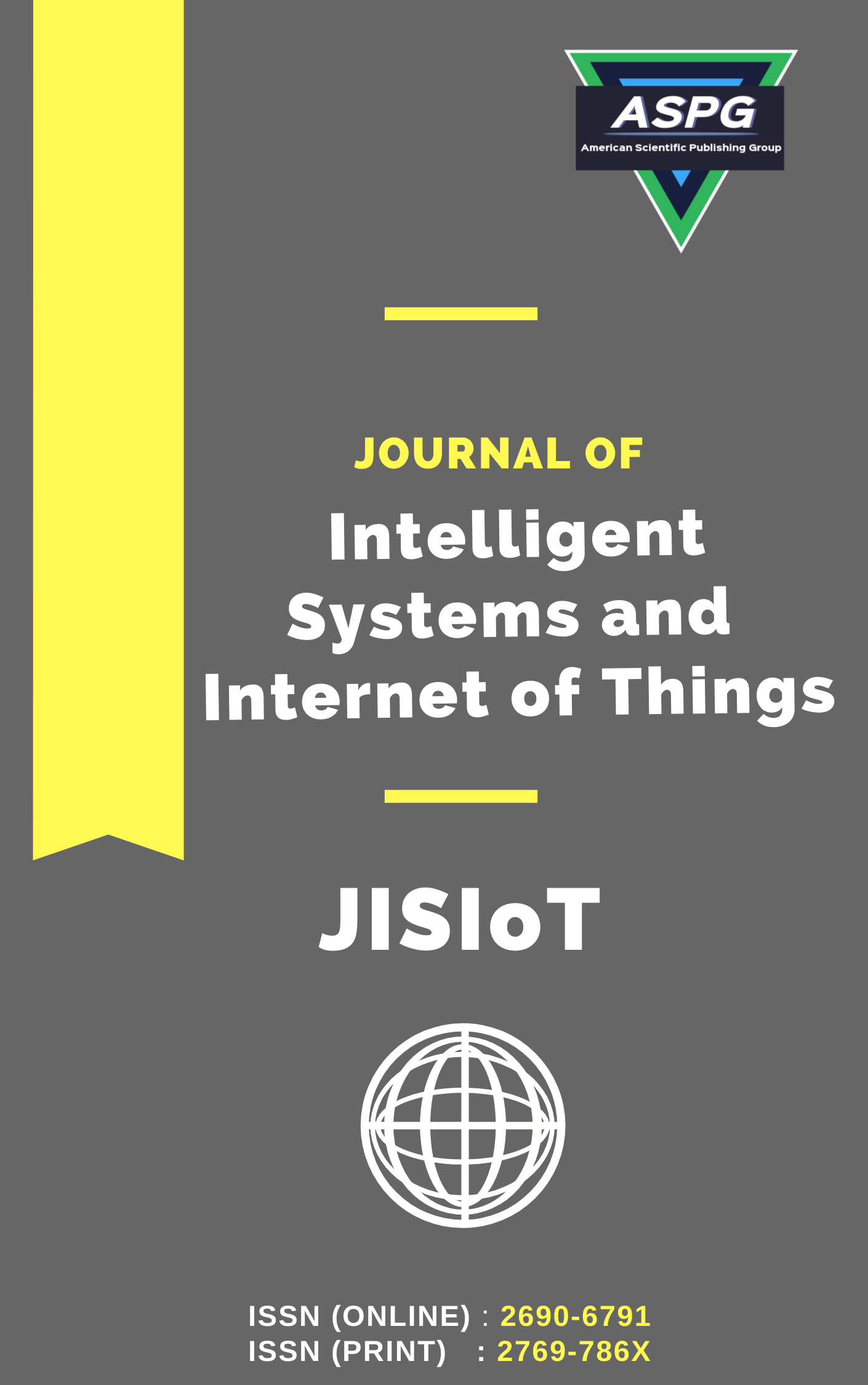

Volume 18 , Issue 1 , PP: 227-237, 2026 | Cite this article as | XML | Html | PDF | Full Length Article
Gagan Kumar Koduru 1 * , S. Kalaimagal 2 , M. Srilakshmi Preethi 3 , G. L. Narasamba Vanguri 4 , Shivanadhuni Spandana 5 , M. Syed Rabiya 6 , M. Rajesh 7
Doi: https://doi.org/10.54216/JISIoT.180117
The amount of marine data is such that it is pointless, and at times infeasible, to attempt training deep learning models on personal workstations. In this work, we present the advantages of cloud based distributed learning in training of deep learning (DL) model and management of big data. Moreover, large volumes of marine big data are classically through wire networks, which are costly, if at all deployable, to maintain. This research propose novel technique in marine life analysis based on remote sensing image using edge cloud IoT model and machine learning algorithms. Here the edge cloud IoT model has been used for collecting remote sensing image in marine life analysis. This remote sensing image has been processed for noise removal as well as normalization. Then this image is feature extracted as well as classified utilizing principal Gaussian convolutional fuzzy encoder with Bayesian reinforcement Markova algorithm. Experimental analysis has been carried out in terms of classification accuracy, average precision, recall, F1 score, AUC for various marine life dataset. proposed technique obtained 97% Classification accuracy, 95% Average precision, 93% Recall, 88% AUC, 94% F1 SCORE.
Marine life analysis , Remote sensing image , Edge cloud IoT , Machine learning algorithms , Fuzzy encoder
[1] M. Jahanbakht, W. Xiang, N. J. Waltham, and M. R. Azghadi, "Distributed deep learning and energy-efficient real-time image processing at the edge for fish segmentation in underwater videos," IEEE Access, vol. 10, pp. 117796–117807, 2022.
[2] S. J. Im, C. Yun, S. J. Lee, and K. R. Park, "Artificial Intelligence-Based Low-light Marine Image Enhancement for Semantic Segmentation in Edge Intelligence Empowered Internet of Things Environment," IEEE Internet Things J., 2024.
[3] L. M. A. El-Magd, A. Darwish, and A. E. Hassnien, "Fish Recognition Using MobileNet-V2 and MAR-Based Metaverse for an Educative Marine Life System," in Artificial Intelligence for Environmental Sustainability and Green Initiatives, Cham: Springer, 2024, pp. 127–145.
[4] N. N. Ahamed and A. Ayesha, "Marine Resources: Identification, Restoring, and Monitoring of Fisheries Food Resources Using Deep Learning and Image Processing," in Artificial Intelligence and Edge Computing for Sustainable Ocean Health, Cham: Springer, 2024, pp. 101–121.
[5] A. Algarni, T. Acarer, and Z. Ahmad, "An Edge Computing-Based Preventive Framework With Machine Learning-Integration for Anomaly Detection and Risk Management in Maritime Wireless Communications," IEEE Access, 2024.
[6] H. S. Demir, J. B. Christen, and S. Ozev, "Energy-efficient image recognition system for marine life," IEEE Trans. Comput.-Aided Design Integr. Circuits Syst., vol. 39, no. 11, pp. 3458–3466, 2020.
[7] M. Jahanbakht, W. Xiang, L. Hanzo, and M. R. Azghadi, "Internet of underwater things and big marine data analytics—a comprehensive survey," IEEE Commun. Surveys Tuts, vol. 23, no. 2, pp. 904–956, 2021.
[8] A. S. Li et al., "NASA NeMO-net's convolutional neural network: mapping marine habitats with spectrally heterogeneous remote sensing imagery," IEEE J. Sel. Topics Appl. Earth Observ. Remote Sens., vol. 13, pp. 5115–5133, 2020.
[9] R. Manoharan, "Improving Security and Performance in Chaotic Optical Communication via Real-Time Pilot Signal Processing Techniques," IETE J. Res., pp. 1–9, 2025.
[10] M. Rajesh, S. Ramachandran, K. Vengatesan, S. S. Dhanabalan, and S. K. Nataraj, "Federated Learning for Personalized Recommendation in Securing Power Traces in Smart Grid Systems," IEEE Trans. Consum. Electron., vol. 70, no. 1, pp. 88–95, Feb. 2024.
[11] C. Prathima et al., "Detecting and Recognizing Marine Animals Using Advanced Deep Learning Models," in Proc. Int. Conf. Expert Clouds Appl. (ICOECA), 2024, pp. 950–955.
[12] Á. F. Gambín, E. Angelats, J. S. González, M. Miozzo, and P. Dini, "Sustainable marine ecosystems: Deep learning for water quality assessment and forecasting," IEEE Access, vol. 9, pp. 121344–121365, 2021.
[13] D. Tiwari, B. S. Bhati, B. Nagpal, S. Sankhwar, and F. Al-Turjman, "An enhanced intelligent model: To protect marine IoT sensor environment using ensemble machine learning approach," Ocean Eng., vol. 242, p. 110180, 2021.
[14] J. Yang, M. Xi, J. Wen, Y. Li, and H. H. Song, "A digital twins enabled underwater intelligent internet vehicle path planning system via reinforcement learning and edge computing," Digit. Commun. Netw, 2022.
[15] L. Gao et al., "AlgaeNet: A deep-learning framework to detect floating green algae from optical and SAR imagery," IEEE J. Sel. Topics Appl. Earth Observ. Remote Sens., vol. 15, pp. 2782–2796, 2022.
[16] Y. Wang et al., "Deep learning for genomic selection of aquatic animals," Mar. Life Sci. Technol., pp. 1–20, 2024.
[17] A. D. Mate et al., "Marine Life Analysis Based on Ocean Water Level Rise and Climate Change Using Underwater Imaging Techniques," Remote Sens. Earth Syst. Sci., pp. 1–13, 2024.
[18] J. Li et al., "Deep learning for visual recognition and detection of aquatic animals: A review," Rev. Aquacult., vol. 15, no. 2, pp. 409–433, 2023.